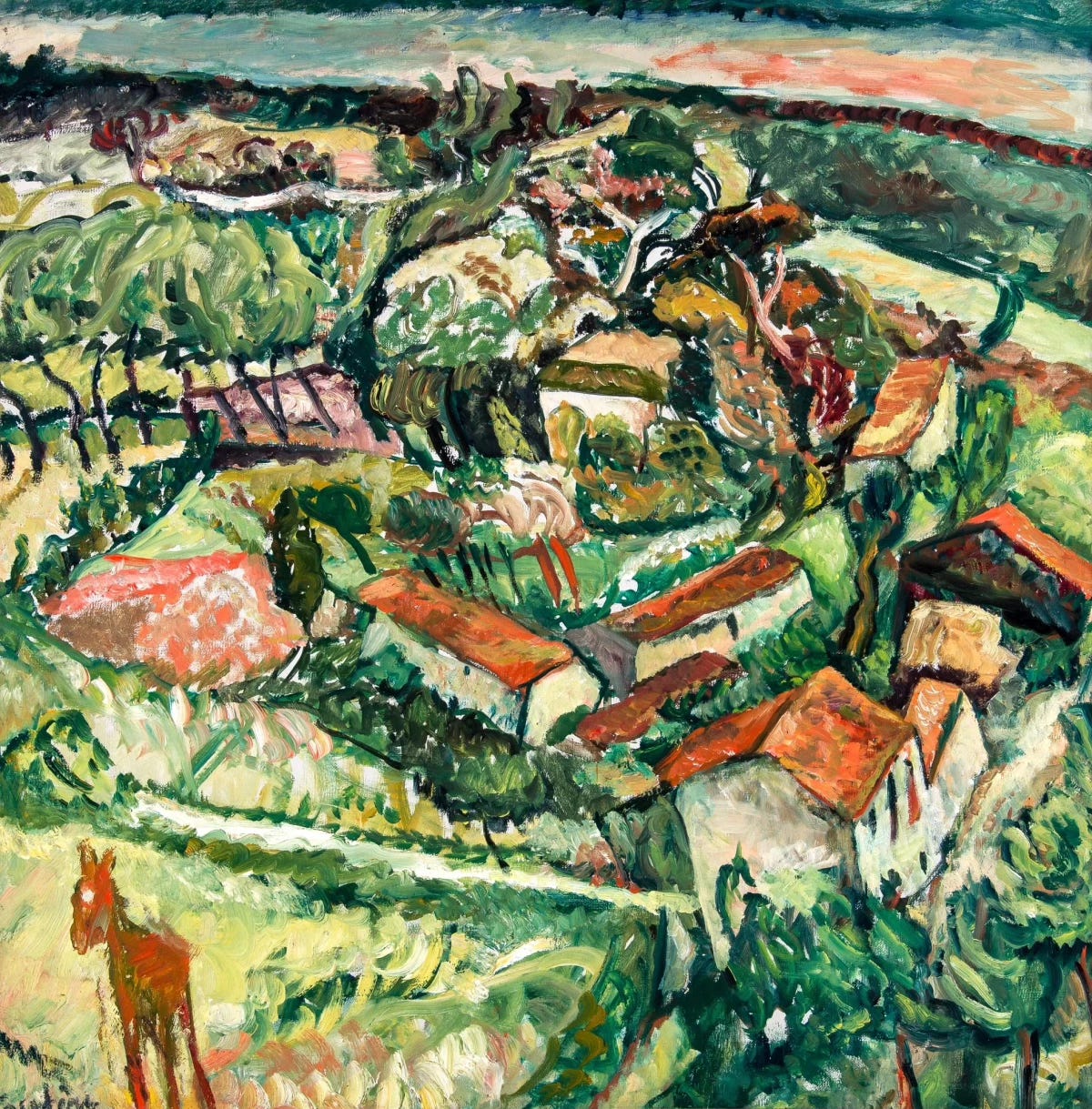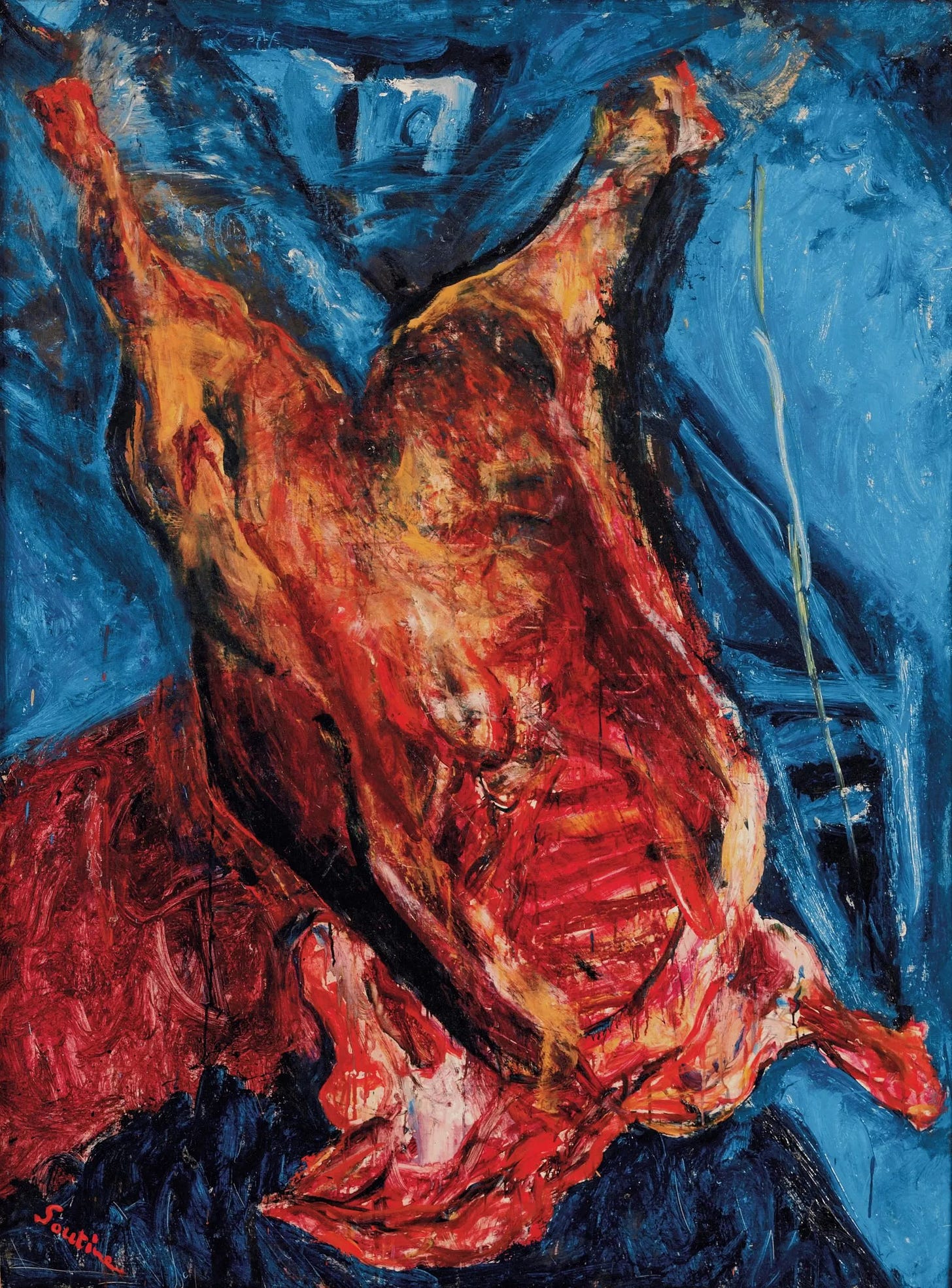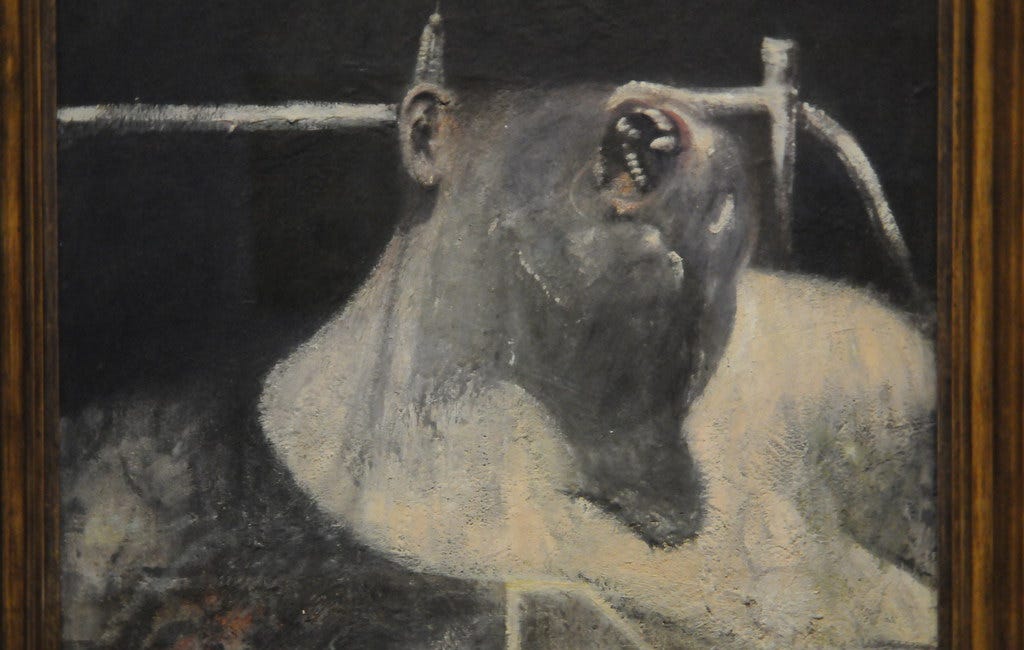The School of Paris: the foreign, Jewish artists of inter-war France
Review of Shocking Paris: Soutine, Chagall and the Outsiders of Montparnasse by Stanley Meisler
Modigliani, Chagall, and Soutine were apparently part of a “school”, based around a loft (La Ruche, or “the beehive”) for artists in Montparnasse, Paris. All of them were émigrés and Jewish, working not as realists but as modernists whose artistic expression was designed to express emotion through vivid color and distortion, often in grotesque poses. Their work reflected Impressionism, Cubism, and Fauvism, the innovations of earlier generations. As their paintings appear to have very little in common, I had no idea they were regarded as organized group.
The book sets out to explore their milieu, the society in which they operated, and the economy of the artistic scene. At the center of the narrative is Chaim Soutine. In 1913, he arrived in Paris from Imperial Russia, an impoverished student who was obsessed with Rembrandt and maniacally focused on a career in painting. He was shy, anti-social, and penniless. Irascible and scathingly critical of his own work, he pursued his art to the exclusion of all else – friendship, love, even professional relationships that might help him. Amedeo Modigliani was one of the few artists who befriended Soutine, helping him to forge relationships with dealers and rich bourgeois patrons. Eventually, after more than a decade of scraping by, he hit the big time. Marc Chagall arrived later and was not closely associated with either of them.
Meisler, who was a distant relation by marriage to Soutine, goes into great detail about how the gallery system operated. There were a number of influential gallery owners who were looking for the “next thing”, in particular for international markets – Picasso was established, the work of many older artists (e.g., van Gogh) were getting bid way up, at least before the Great Depression of 1929. The School seemed to have fit the bill. I was not surprised that a lot of luck was involved in the artists who became hits, in particular with passionate collectors of the jazz age, such as Albert Barnes of Philadelphia and Madeleine Castaing of Paris.
Meisler also covers a lot of the basic history, such as the momentary exhaustion of anti-Semitism in France in the aftermath of the Dreyfus Affair (a coverup involving fabrication of evidence to “protect the honor of the French Army” at the expense of a Jewish officer and convert to Catholicism), only to be revived in the 1930s with fascism and the search for scapegoats. While it is interesting to see how members of the School of Paris stayed one step ahead of their antagonists, I was not reading the book for details of the Holocaust, which are available elsewhere.
The art is what I wanted. Meisler is clearly a partisan for Soutine, who is lesser known than the other artists of the School today. However, during the 1920s, Soutine was recognized as one of the greatest painters in France and is held in higher esteem there than he is in the US, where he is seen as rather obscure.
Unfortunately, Meisler does not attempt to relate the School to international currents of the time. I see Soutine as a kind of Franco-Russian version of the Austrian Expressionist Oscar Kokoschka, whose paintings were supposed to interpret and portray the psychology – the inner life – of his models as well as the subjective perception of landscapes. Kokoschka, like Egon Schiele, used outrageous colors and contorted gestures to bring out such character, much as Soutine was doing with his huge ears, thick paint, and brilliant colors. Did they influence him? Why did that kind of innovation appear at that time? Why was it suddenly accepted? None of these questions are answered in the book.
Moreover, in lionizing Soutine, Meisler is often dismissive of the others in the school as “less innovative”. Chagall, who is enduringly beloved today, is somehow “unoriginal” or merely pretty rather than sufficiently avant garde. Maybe. But who’s to say that the unique aesthetic of his work is not worthy of praise? I happen to prefer the work of Chagall and Modigliani.
The system that supported the School of Paris broke down as the war approached. Chagall escaped to the US, but Soutine died from neglected ailments, much like his friend, Modigliani, had done earlier. Prices fell precipitously, as did Soutine’s international reputation; he was never again viewed as fashionable as he was in the 1920s, though his pieces continue to sell for millions. It is clear that Soutine was influential. Francis Bacon, for example, studied him and produced his own work of meat racks and the like (see above).
This is a good book, but it is for serious aficionados of the pre-World War II Parisian scene. I can’t say I learned a great deal, except that I appreciate Soutine more than I did and will seek out his work in Paris and Philadelphia.
Related reviews:
A seminal reading experience, mixing art criticism with history and biography
Since my high school infatuation with surrealism, I have been fascinated with every aspect of modernism. What caused such an explosion of experiment and rebellion? What, if anything, did the various disciplines have in common? What linked Monet and Picasso to Ravel, Hemingway, Frank Lloyd Wright, and even Sigmund Freud? Somehow, it seemed all of a piece…
Viennese intellectuals, artists and nationalists, with a dash of Freud
It is easier to say what this book is not than what it is: not a narrative history, not an analysis of causes, not even a basic introduction. It lacks clear definitions of the movements it is supposed to cover, such as liberalism, modernism, psychoanalysis, and the birth of mass nationalistic politics. That means that readers will either have to be fami…
The difficult birth of Impressionism
This is a magnificent story that pits Ernest Meissonier – the ultimate establishment artist of historical realism – against Edouard Manet, who created a revolutionary style of subjective imagery, offering the “impression” or personal perception of life rather than an exacting replica. At first glance, this might seem like a rather dull subject: we all k…
Review of Matisse and Picasso: The Story of Their Rivalry and Friendship by Jack Flam
I have enjoyed the work of both artists since our first childhood trips to the Art Institute, indeed their images act like hinges in my imagination. These two geniuses grew side by side for nearly 50 years, studying each other, transforming images by exchange, and yes, competing and jealous, too. I had little idea how much they shared and how close thei…









